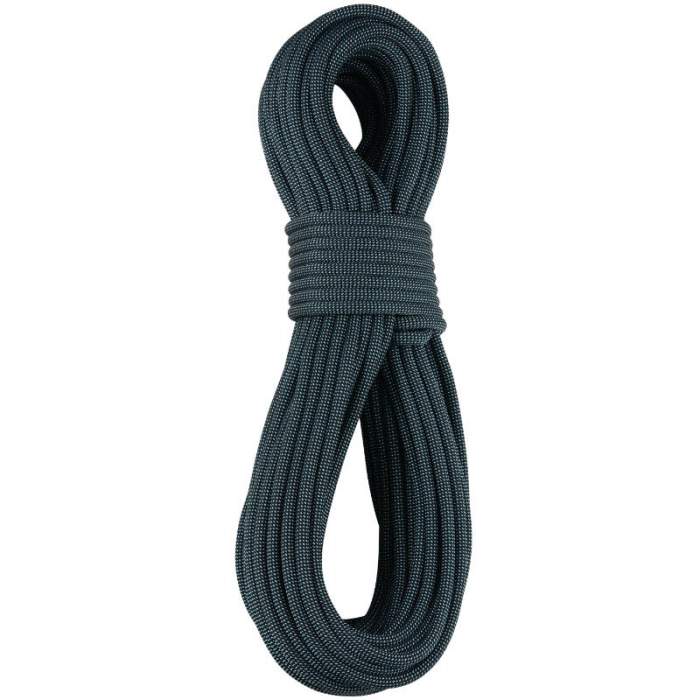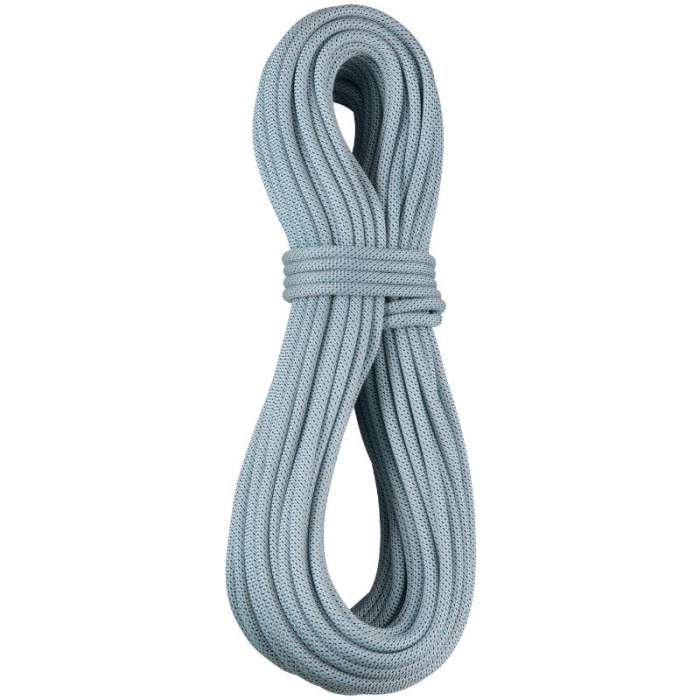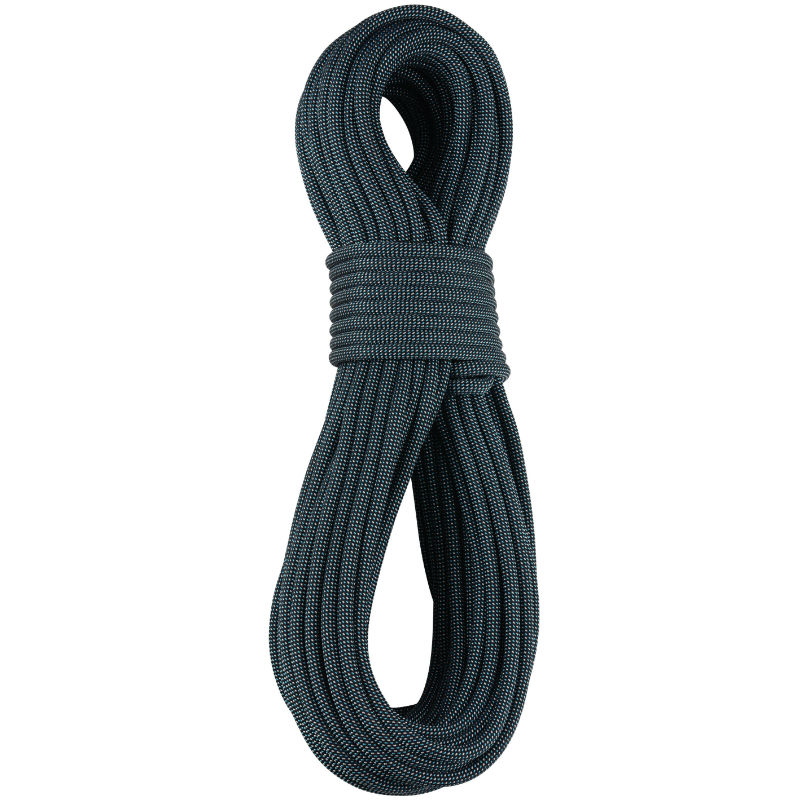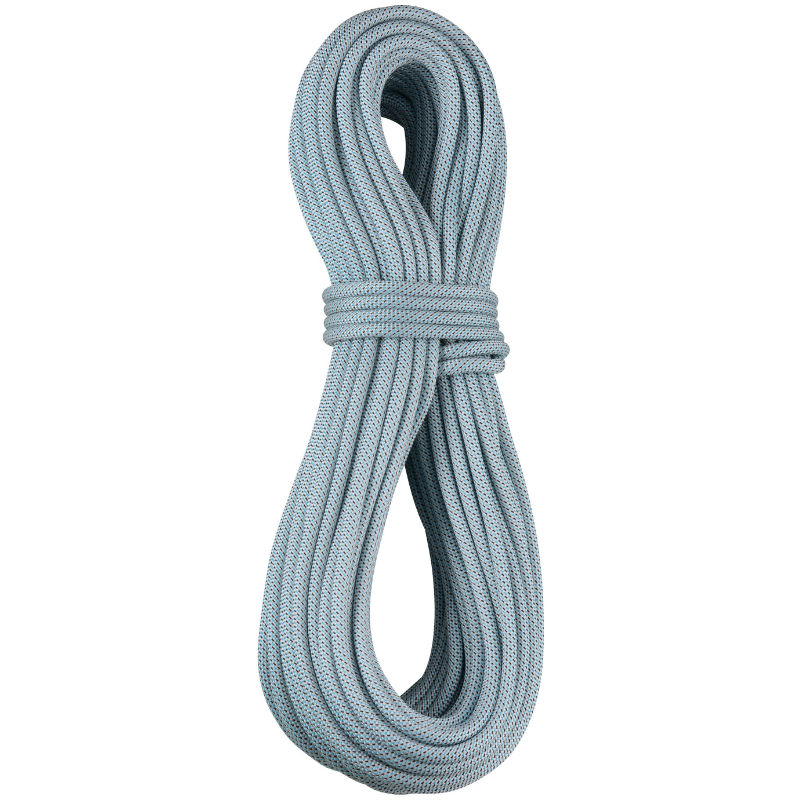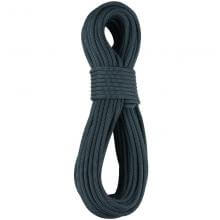8.6mm Corbie 60m 2xDry
Description
If you are pushing it to the limit, the Corbie 8,6 might mean the difference between success and failure. It’s super light and water resistant thanks to our high-quality finishing processes.
Certified as twin, double and single rope
Pro Shield finish for optimal performance
Dry Shield finish for outstanding dirt and water resistance
Thermo Shield treatment for perfect handling
Not suitable for working routes or top roping when used as single rope
Retail price
This Product is Hard to Find.
We don’t know where you can buy this item online in the US. We’ll continue to check all the major retailers and will update this page as soon as we find one.
If you know where to find this online in the US, let us know, and we’ll add the link.


| Weight | 51.0 g/m 6.746 lbs / 3060 g |
| Diameter (millimeters) | 8.6 mm |
| Length (meters) | 60 m |
Rope Type  Type
There are 3 types of dynamic ropes that are used by climbers. They are known as Single, Half (Double), and Twin. The type of rope preferred varies by climbing style, location, and region. Single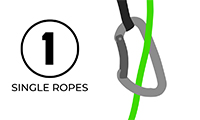
By far, the most common type of rope. Great for indoors and out. In the US, it is the most common sport and big wall and are also used for trad cragging. The handling is simple and the diameter options are quite varied. Half (Double)
The best cure for a meandering route, only one of the ropes will clip into each piece of protection so a mindful climber can can reduce rope drag considerably. You can also rappel twice the distance, it’s easier to safely protect traverse pitches and there is a smaller chance that both ropes would become damaged (by rockfall, crampons, etc). Twin
Both ropes must be clipped through each piece of protection. This is the lightest style of (two) ropes. They excel for rappels, going twice the distance vs a single rope, but do not have the ability to mitigate rope drag even though there are two ropes. It is unlikely both ropes will be damaged at once, and is why many alpine, ice and mixed climbers choose twin and/or half ropes. Learn More
Every rope type and when to use them | Single/Half/Twin |
UIAA Falls (Single / Half / Twin)  UIAA FallsThis refers to the number of UIAA falls a rope has been tested to be able to withstand without breaking. The UIAA fall is a complicated test that is designed to create a uniform standard for strength in ropes, and is not generally reflective of real-world climbing situations. The test involves dropping a weight tied to the rope in such a way that it will see the highest amount of force a real-world situation could generate. The UIAA requires that Single and Half ropes must pass this test without breaking at least 5 times, while twin ropes must withstand 12 falls. In practice, it can likely be concluded that ropes that have higher than this standard number of falls will be stronger and put up with more abuse. It is important to note that any rope that is UIAA or EN certified is considered safe to climb on, regardless of the number of UIAA falls it is rated for. | 5 falls / 20 falls / 25 falls |
Dynamic Elongation (Single / Half / Twin)  Dynamic ElongationThis refers to the amount of stretch measured during the dynamic testing (or drop test) used when certifying ropes. Higher stretch will absorb more force and result in a softer catch but increases chances of groundfall at the beginning of a climb. The EN and UIAA require a stretch of at least 10% and no more than 40% for dynamic ropes. Single and Half ropes are tested individually and Twin ropes are tested as a pair. | 32.0 % / 29.0 % / 29.0 % |
Static Elongation (Single / Half / Twin)  Static ElongationThis refers to the amount of stretch measured during the static test used when certifying ropes. Most climbers will notice the difference in static elongation when climbing in a top rope situation, where higher stretch will make for a springier belay and could result in a ground fall when climbing closer to the ground. The EN and UIAA require a stretch of no more than 10% for Single and Twin ropes and no more than 12% for Half ropes. Single and Half ropes are tested individually and Twin ropes are tested as a pair. | 8.3 % / 8.3 % / 5.2 % |
Impact Force (Single / Half / Twin)  Impact ForceImpact force is the amount of force in kN that is measured at the testing mass during the UIAA dynamic drop rope test. When the weight is dropped, the force measured must be at or below 12kN for Single and Twin ropes and 8kN for Half ropes. The real world application of this test is determining that the rope can dissipate and absorb the appropriate amount of force from the fall as it would be felt by the climber. The variables used in the test set a situation that is well beyond anything climbers encounter, and shouldn't be considered realistic to actual climbing situations. In reality forces of this magnitude would result in severe injury as this test is designed to test the limits of the rope and not the comfort of the climber. | 9.30 kN / 6.40 kN / 10.00 kN |
Dry Treatment  Dry TreatmentWhen a rope is dry treated, it has had a coating applied to its core fibers, its sheath fibers, or both. The purpose of this coating is to reduce the amount of water the rope can absorb when in wet or icy conditions. Wet ropes are heavier, handle and belay differently, and have been tested to be weaker than dry ropes. Many climbers prefer dry treated ropes for very dusty or dirty environments, as they are more resistant to uptake of dirt and can stay cleaner longer. Learn More
Benefits of Dry vs Non-Dry ropes | Sheath & Core |
| Sheath Proportion (%) | 29.0 % |
| Sheath Slippage (mm) | 0 mm |
| Type of Middle Mark | None |
| Rope End Marker | None |
| Certification | CE, EN, UIAA |
RFID / NFC Option  RFID and NCFThis technology can be helpful if you are a gym or professional business where you'd like to track the usage and age of your ropes. RFID is how items are uniquely identified using radio waves (Radio Frequency Identification). It's for 1-way communication from 10cm to 100m away depending on the frequency. Example: Airport Baggage. NFC is a subset of RFID that is restrained to close proximity communication typically less than 10cm (Near Field Communication). NFC chips can operate a 2-way signal to exchange information. Example: Apple Pay. | None |
No reviews yet.
The Corbie is an amazing technical achievement and the technology involved in making a single rope of such low weight will surely feed through into more mainstream ropes over the next years. That low weight does come at the cost of durability, making this not the ideal rope for general climbing, but if you need the absolutely lightest single rope available and understand the trade-offs, then the Corbie is currently the contender to beat.
All of this paints a somewhat contradictory assessment for me. Ultimately, any reservations I have about the Corbie boil down to the niche for which the rope is made, rather than criticism of its quality. On one hand, it’s an awesome rope, to be sure, and most climbers would get a good season of steady use out of it—it sits near the top of the heap for lightning fast ropes that are as unobtrusive as possible while climbing.
On the other hand, you could argue that the Corbie is too specialized. Many climbers will find their needs better served with a set of twin ropes or a slightly thicker single rope, but if you have a lot of alpine objectives and you want a smaller, faster rope, the Corbie is a strong option.
Triple-rated ropes are a game changer. If you climb big routes in places where speed matters, I recommend you invest in one (or a set of) lightweight triple-rated ropes. Edelrid, Beal, and Mammut are currently setting the industry standard for these new ropes. Edelrid offers two top-of-their class ropes: by the numbers, the Corbie is only slightly lighter (1 g/m) than the Swift, with small tradeoffs in elongation and impact force that you’ll probably never notice. Is the Corbie worth the extra $20? Do you want to have the very best, or just really really good…?
The 8.6mm Corbie (RRP: £190 for 60m) will be available from select retailers from March 2014 and is the thinnest triple-rated rope to be found anywhere in the world. Suitability for use in a single, double or twin configuration is a result of EDELRID’s proprietary braided core construction, which functions as a rope within a rope. The incredible strength of this construction allows even very thin ropes, such as the Corbie, to pass the certification norms for a single rope, whilst also remaining lightweight, in this case 51g/m. The Corbie makes use of the full range of EDELRID finishing processes including Pro Shield where microscopic Teflon particles are bonded to the yarns providing a protective layer with greatly improved load-bearing properties. A Dry Shield hydro and oleo-phobic finish, which resists both dirt and moisture, and extends the working lifespan of the rope; plus Thermo Shield a heat treatment that relaxes and then shrinks the fibres of the rope, ensuring it remains both compact and supple throughout its long working life.

